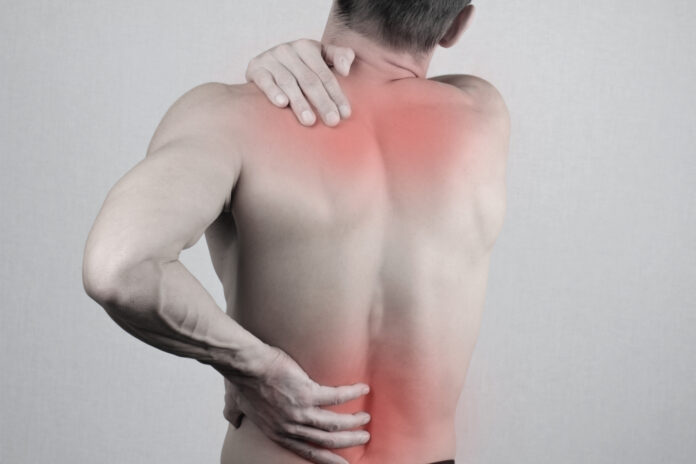If you’re among the 65 million Americans who’ve recently had an episode of back pain, there’s a possibility the issue was triggered by a spine condition. This is especially so if you experience persistent low back pain. The pain is often associated with spinal degeneration and injury.
Visiting a doctor is the best way to know what specific spine condition you may be suffering from. The fact is that there are numerous spine conditions out there. Pointing out which condition you’re experiencing is key to getting the right treatment.
In this blog, we highlight the top spine issues that affect Americans today. Let’s dive right in.
Scoliosis
Scoliosis is a condition in which the spine has an abnormal bending or curvature. This condition ranges from mild to severe, and it affects millions of Americans today.
Scoliosis most commonly develops in infancy, early childhood, and adolescence. While the condition occurs equally among both genders, it’s much more likely to progress to a curve magnitude that needs medical attention among females.
Among the common symptoms of scoliosis are uneven shoulders and rib cages that differ in height. You may also notice that one or both hips seem higher than usual, while in other cases, the body seems to lean to one side. Patients also report back pain.
Scoliosis treatment can vary depending on how severe the case is, as well as the patient’s age. Among the top treatment options are physical therapy, bracing, and surgery.
Whiplash
Whiplash refers to a neck injury that’s often caused by a sudden motion or jerking of the head. As a result of the sudden, awkward movement, your neck muscles strain. You may also suffer damage to the spinal disc, intervertebral joints, and ligaments in your neck.
In many cases, you will feel symptoms immediately following the trauma. Some people take up to 24 hours to start feeling whiplash symptoms.
Common symptoms of whiplash include headaches, stiff neck, neck pain, fatigue, dizziness, lower back pain, and difficulty concentrating.
Treatment for whiplash involves taking pain relievers to treat the pain. Icing may also help, particularly during the first 24 hours after the trauma. Physical therapy, massage, and heating pads can also help.
Herniated Disc
Your spine is made up of vertebrae, with discs acting as cushions between each of these bones. When a spinal disc is herniated, it means that the cushioning between your vertebrae has shifted out of its casing. In some cases, herniated discs have no symptoms, but they can still interfere with nerves in your spine.
Many people with a herniated disc experience back pain, tingling, numbness, pain in the legs and arms, and muscle weakness. While a herniated disc most commonly occurs in the lower back, it can also happen in the upper one.
There are many ways to lower the risk of disc herniation, including maintaining a healthy weight, exercising regularly, and keeping good posture. But once you start experiencing the symptoms of this spinal condition, it’s best to see a doctor right away.
Osteoporosis
Osteoporosis is among the most common spine conditions in older adults. The condition involves weakened bones in your spine as a result of low bone mass. These weakened bones can become brittle and experience damage, resulting in collapsed vertebrae, a hunched posture, and fractures.
One of the main problems with this condition is that it’s difficult to tell that your bones are getting weaker. That’s because there usually aren’t many clear symptoms until your bones become osteoporotic.
Thankfully, osteoporosis is preventable. Maintain a healthy diet that contains calcium and foods rich in vitamin D to strengthen your bones. It also helps to do exercises like walking, weightlifting, and jogging, as they help boost bone health, balance, and posture.
Sciatica
Sciatica is another common spine condition, affecting up to 40% of the population at some point in their lives. The condition becomes more prevalent with age.
This problem affects your sciatic nerve, which runs from your lower back down your leg. You may feel numbness, weakness, and pain in your lower back that radiates all the way down your leg.
Sciatic nerve damage may be caused by a variety of things, including a herniated disc, a narrowing spine compressing the nerve, and a bone spur. Like OPLL spine issues, sciatica affects people of all races and genders.
Treatment for the condition includes physical therapy, chiropractic sessions, and steroid injections. Your doctor may also prescribe pain relievers, anti-inflammatories, and muscle relaxants to manage the symptoms.
Osteoarthritis
You’re probably already familiar with arthritis, which refers to the inflammation of joints. Most people assume that arthritis affects only the limbs and hands, but that’s not the case. Arthritis can affect any area of your body, including the spine.
Osteoarthritis involves the deterioration of the cartilage and joints in your spine. You may experience inflammation and pain. This spine condition can cause nerve damage and bone spurs.
There are many ways to manage the symptoms of osteoarthritis. These include exercise, acupuncture, massage, and maintaining a healthy body weight. Talk to your doctor if symptoms persist.
Don’t Let Spine Conditions Keep You Down
Spine conditions can take the joy out of your life, but that doesn’t have to be the case. There’s always something you can do to prevent them or manage the symptoms once they occur. The key to dealing with these conditions is first to understand what spinal problem you’re facing.
Would you like to read more great content like this? Keep visiting our blog.









